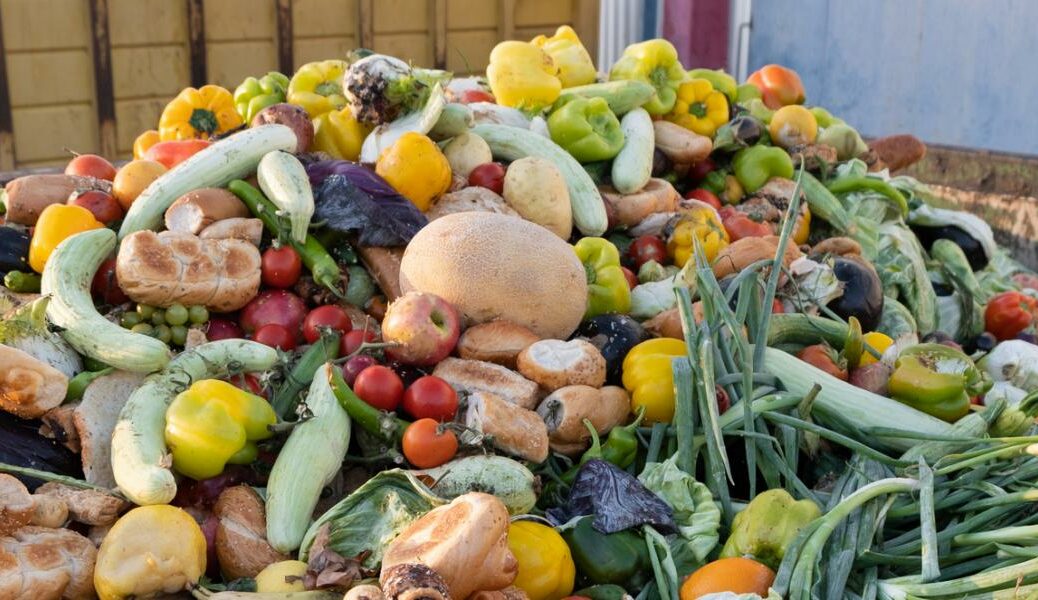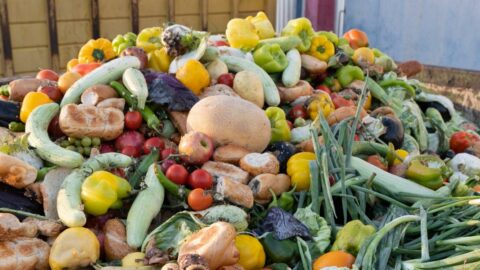The story of food waste in the United States is both surprising and sobering. In a nation where supermarket aisles overflow and dining options are plentiful, an astonishing amount of food never reaches our plates. In fact, about 40% of food in the U.S. gets wasted every year. This isn’t just a tale of forgotten leftovers or spoiled produce; it’s a complex narrative that stretches from farm fields to grocery stores, and from bustling restaurants to our own kitchens.
While we often hear about the environmental impacts of plastic or emissions, food waste silently contributes to these very issues, consuming valuable resources only to end up in landfills. Yet, in the shadows of this wastage lies an even more compelling story – that of food insecurity. In a land of plenty, millions still struggle to put food on the table, highlighting a striking disconnect within our food system.
But it’s not all grim. In the midst of this challenge, there’s a wave of change being led by innovative startups and dedicated nonprofits. These organizations are tackling the dual issues of food waste and hunger, turning excess into opportunity.
This article delves into the various stages of food waste in the U.S., the paradox of food insecurity alongside it, and the promising solutions emerging in the fight against this overlooked issue. By understanding the scale and scope of food waste, we can begin to see our role in both its problem and its solution. Let’s explore this critical issue and uncover the ways we can all contribute to a more sustainable and equitable food future.
The Food Waste Journey from Farm to Fork: Challenges & Solutions
The journey of our food, from its humble beginnings in the soil to its final destination on our plates or in our waste bins, is a multifaceted odyssey. This expedition traverses various stopping points – each with its own set of challenges and opportunities for innovation.
At each stop – the farm, during transportation, within the bustling aisles of grocery stores, the dynamic world of hospitality, the consumer’s home, and finally, the crucial stage of disposal – we encounter unique problems that contribute to the larger issue of food waste. However, in parallel with these challenges, there is a burgeoning array of innovative solutions and technological advancements being implemented. These innovations are not just solving problems at each stage but are also interconnecting these stages more efficiently.
Our narrative below delves into the specific issues faced at each juncture of the food’s journey and explores the creative and effective solutions being employed to combat food waste, making this journey more sustainable and less burdensome on our planet.
At the Farm
The Grower’s Gambit
The farmer surveys his land, a green sea of potential rippling under the sun. Here, the food waste story begins with an excess born of caution. Overproduction is the farmer’s hedge against nature’s fickleness, but it’s a practice that can lead to waste before the food even leaves the field.
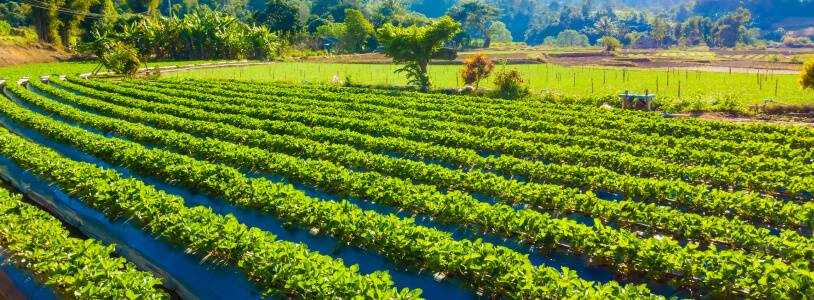
Challenge
The journey of food waste often starts in the very fields where it’s grown. In the U.S., agricultural overproduction is a prevalent issue, driven by the need to ensure a consistent and abundant supply. Farmers, motivated by market demands and sometimes by subsidies, tend to plant more than what is actually needed, safeguarding against potential crop failures or lower yields.
The Solutions
Advancements in precision agriculture enable the farmer to plant more strategically, reducing the likelihood of surplus. Tech companies like CropX offer soil sensors that guide precise irrigation and fertilization. Meanwhile, misshapen but edible produce finds a market through outlets like Imperfect Foods, which sells these goods at a discount, preventing waste and offering farmers a fair return.
On the Road
The Transportation Logistics of Freshness
The transporter knows his refrigerated truck is a lifeline, maintaining the chill that keeps food from spoiling. The route from farm to store is a meticulously timed dance of temperature control and traffic navigation. A breakdown, a traffic jam, or a power failure can spell disaster. Perishables are especially vulnerable, their freshness ticking away with each passing hour.
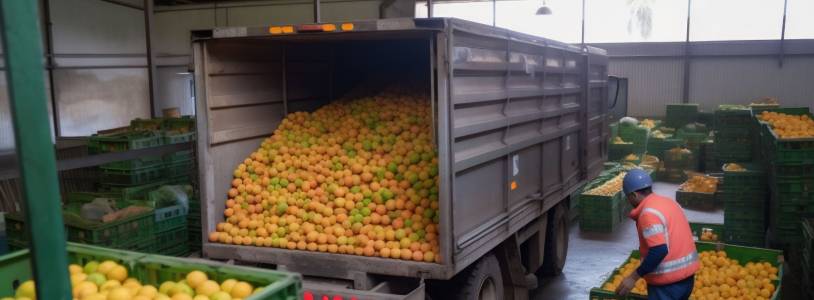
Challenge
Once crops are harvested, they embark on a complex journey through the supply chain, where inefficiencies contribute further to food waste. Transporting perishable items like fruits and vegetables across long distances presents a race against time and spoilage. Inadequate storage facilities or delays in transit can result in significant losses. It’s estimated that about 12% of fruits and vegetables are lost in the distribution stage alone.
The Solutions
Increasingly, smart logistics come into play. IoT devices from companies like Controlant provide real-time tracking, maintaining the optimal environment for delicate items like berries and leafy greens. And with apps like FoodLogiQ, supply chain transparency is enhanced, allowing for immediate corrective actions and reducing the risk of spoilage.
In the Home
The Consumer’s Conundrum
At home, the consumer’s fridge is the last checkpoint before food becomes waste. Here, good intentions can fall victim to busy lives and confusing labels, leading to waste that’s as unnecessary as it is common.

Challenge
In households, poor food management practices, like buying in bulk without a plan for usage or improper storage of perishables, lead to spoilage. The confusion over expiration dates and labeling adds to this problem. Many consumers misinterpret ‘best before’ dates as safety indicators, resulting in edible food being thrown away.
The Solutions
Education and awareness about food storage, preparation, and shelf life can play a critical role in reducing waste at this stage. For example, a survey revealed that over 20% of household food waste could be avoided through better understanding of how to store and use leftovers. Technology can also help consumers reduce food waste. Apps like NoWaste provide inventory management and recipe suggestions to use what’s on hand. For longer-term storage, innovations like BluApple extend the life of produce, keeping it fresh and reducing the frequency of waste.
Hospitality
Food Waste in Restaurants
In the Kitchen: The Chef’s Challenge
In the bustling environment of restaurant kitchens, chefs and their teams are the custodians of culinary experience, but also of potential food waste. Here, every dish tells a story, and every unserved meal is a missed opportunity.

Challenge
Large portion sizes and the unpredictability of customer demand often result in excess food. Furthermore, the high standards for presentation can lead to significant amounts of perfectly good food being discarded, merely because it doesn’t meet the aesthetic criteria.
The Solutions
Restaurants are adopting portion control strategies and flexible menu designs that allow for the use of various ingredients in multiple dishes, reducing waste. Technology, too, plays a role: apps like Winnow and LeanPath offer chefs data-driven insights into their kitchen’s waste patterns, enabling them to adjust their food preparation and ordering processes accordingly.
At the Table: The Diner’s Decision
The restaurant diner, often unaware, sits at a critical junction of the food waste journey. Their choices – what and how much they order – can directly influence the amount of food left uneaten on the plate.

Challenge
Diners’ eyes being bigger than their stomachs is a common trope, but it’s grounded in truth. Combined with the tendency of restaurants to serve large portions, this often results in significant leftovers.
The Solutions
Restaurants are increasingly encouraging diners to take leftovers home, normalizing the practice of asking for a ‘doggy bag.’ Some establishments have also started providing information on menus about portion sizes or offering half-portions.
Beyond the Meal: Hospitality’s Holistic Approach
The hospitality industry, encompassing hotels and resorts, is a key player in the food waste story. With buffets, events, and in-room dining, the potential for waste is enormous.

Challenge
Buffets epitomize abundance, often leading to large quantities of food being prepared but not consumed. Event catering faces similar challenges, with the difficulty of predicting exact guest numbers and preferences.
The Solutions
Initiatives like the Hotel Kitchen, which offers tools and resources for waste reduction, are gaining traction. Hotels are turning to technologies that forecast food demand more accurately and are finding creative ways to repurpose unserved food, either through donations or by transforming it into new menu items.
Beyond Consumption
The Afterlife of Food
Once food has served its purpose or been deemed unfit for consumption, it’s not necessarily the end of its usefulness. The scraps and leftovers can embark on a new journey towards sustainability.
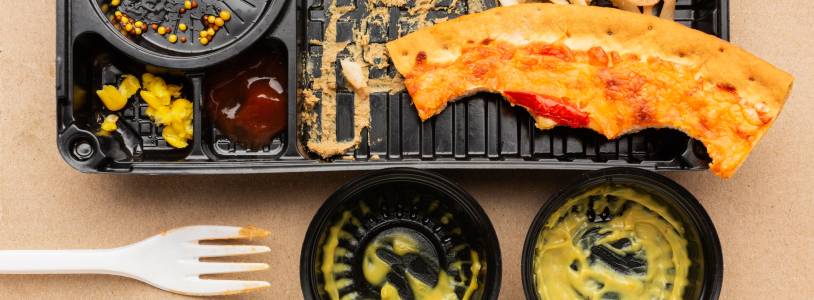
Challenge
Traditionally, food waste ends up in landfills, where it decomposes anaerobically, producing methane—a potent greenhouse gas. This disposal method is a lost opportunity for resource recovery and energy production.
The Solutions
Modern composting solutions, such as the Lomi electric composter, allow households to turn waste into soil nourishment. On a larger scale, municipal green waste programs and industrial anaerobic digesters, like those from BioHiTech, transform organic waste into biogas, promoting a circular economy.
The journey of our food from farm to fork, and beyond, is laden with obstacles that can lead to waste. But it’s also a path marked by ingenuity and the growing commitment to sustainability. At every stage, individuals and innovations play a pivotal role in ensuring that food fulfills its most noble purpose: to nourish and sustain. As these solutions become more intertwined with our daily lives, the vision of a zero-waste food system moves closer to reality.
Beyond Food: The Enormous Rippling Effects of Food Waste
Food waste is an issue with deep and varied impacts that ripple through our environment and economy. Understanding these impacts can help highlight the urgency of addressing food waste and its far-reaching consequences.

The production of wasted food involves immense water usage; about 25% of all freshwater in the U.S.

This contributes to ecological imbalances, disturbing natural ecosystems and contributing to biodiversity loss.
Environmental Impact of Food Waste
- Greenhouse Gas Emissions: Food waste significantly contributes to greenhouse gas emissions, particularly methane, a potent gas released during the anaerobic decomposition of organic matter in landfills. If food waste were a country, it would rank as the third-largest emitter of greenhouse gases globally, behind China and the United States.
- Resource Use: The production of wasted food involves immense water usage; about 25% of all freshwater in the U.S. is consumed to produce food that is never eaten. Additionally, the land used to grow this food, often cleared of natural habitats, represents a substantial resource loss.
- Resource Use: The production of wasted food involves immense water usage; about 25% of all freshwater in the U.S. is consumed to produce food that is never eaten. Additionally, the land used to grow this food, often cleared of natural habitats, represents a substantial resource loss.
Economic Impact of Food Waste
- Costs to Stakeholders: The economic repercussions of food waste are felt across the supply chain. Farmers face financial losses due to overproduction and aesthetic rejection of produce, while retailers in the U.S. lose around $15 billion annually from unsold fruits and vegetables. For consumers, this translates into an average household waste of about $1,600 worth of food each year.
- Broader Economic Implications: The economic value of the resources used in producing, processing, and transporting wasted food is significant, representing a considerable inefficiency in the food system. Additionally, the societal costs, including the potential to redirect these resources to combat food insecurity, highlight the broader economic implications of food waste.
By examining the environmental and economic impacts of food waste in these specific areas, we gain a clearer understanding of the issue’s complexity. Each aspect not only emphasizes the immediate need to minimize food waste but also sheds light on the broader benefits that can be achieved through effective management and reduction strategies.

Retailers in the U.S. lose around $15 billion annually from unsold fruits and vegetables

For consumers, this translates into an average household waste of about $1,600 worth of food each year.
Solutions and Innovations: Charting a Course for Change
In the face of the daunting challenge of food waste, a variety of solutions and innovations are emerging, offering hope and practical pathways forward. These approaches span from governmental policy and international agreements to grassroots initiatives and technological innovations, each playing a crucial role in the collective effort to reduce food waste.
Governmental Action in the War on Food Waste
In the United States, food waste is not only an environmental concern but also a policy priority. Both federal and state governments have recognized the staggering impact of food waste and are implementing measures to address it. These policies aim to create systemic changes that encourage the reduction, recovery, and recycling of food waste across the nation.
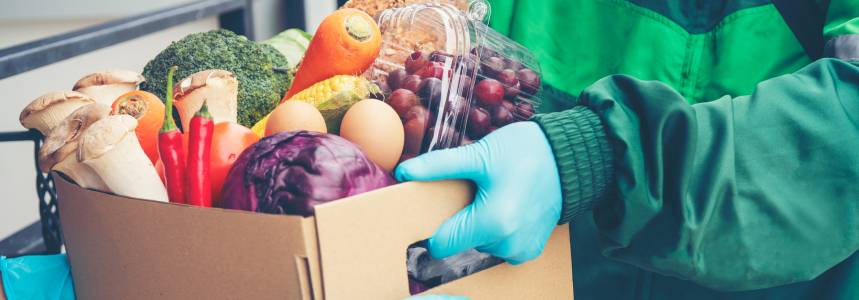
Federal Initiatives
U.S. Department of Agriculture (USDA) and Environmental Protection Agency (EPA)
Together, the USDA and EPA launched the U.S. Food Waste Challenge, calling for a 50% reduction in food waste by 2030. To facilitate this ambitious goal, these agencies are working with private businesses, nonprofit organizations, and community leaders to improve food recovery efforts and educate the public.
The Food Donation Act
The Bill Emerson Good Samaritan Food Donation Act encourages food donation to non-profit organizations by protecting donors from liability. It’s a federal law that provides a national baseline of protection for food donors, which states can build upon.
Food Recovery Hierarchy
The EPA has established a Food Recovery Hierarchy which prioritizes actions organizations can take to prevent and divert wasted food. The most preferred practices are source reduction and feeding hungry people, followed by feeding animals, industrial uses, composting, and least preferred, landfill or incineration.
State-Level Legislation
California
California has been at the forefront with Senate Bill 1383, which requires a 75% reduction in the statewide disposal of organic waste by 2025 and mandates that edible food that would have been sent to landfills be recovered for human consumption.
Massachusetts
Massachusetts implemented a commercial food waste ban, which prohibits businesses from disposing of a ton or more of organic waste per week in landfills. This has spurred an increase in composting and anaerobic digestion facilities in the state.
Vermont
Vermont’s Universal Recycling Law, which bans all food waste from landfills, has made it the first state to implement such comprehensive legislation. It encourages composting and animal feed as alternative options.
Government policies and regulations in the United States are key levers in the fight against food waste. From broad national targets to state-specific mandates, these initiatives are creating a framework within which businesses, consumers, and waste management entities can operate more sustainably. As the nation moves forward, these policies will continue to evolve, addressing the nuances of food waste reduction and paving the way for more innovative solutions to take root.
Nonprofits Battling Food Waste
Nonprofits play a vital role in the fight against food waste, often bridging the gap between excess food and those in need. Here are some notable examples of innovative food banks and nonprofits in the United States that are making strides in both reducing food waste and addressing food insecurity.
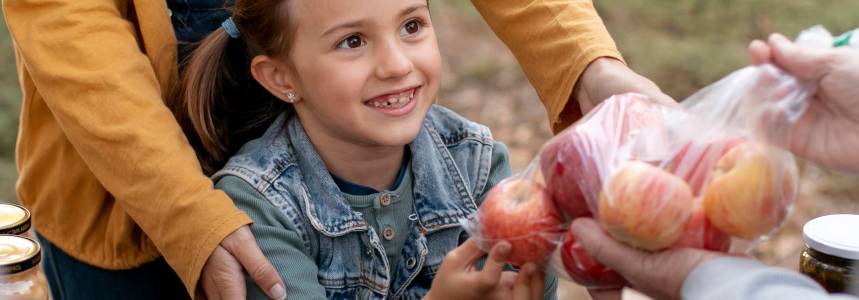
- Feeding America: As the nation’s largest domestic hunger-relief organization, Feeding America has a nationwide network of food banks and is a leader in food recovery. They work to gather and redistribute surplus food to those in need, effectively reducing food waste while addressing hunger.
- The Food Recovery Network (FRN): FRN is a student-led movement fighting food waste and hunger by recovering perishable food that would otherwise go to waste from their college campuses and surrounding communities and donating it to people in need. Since its inception in 2011, FRN has expanded to include chapters across various college campuses and has recovered millions of pounds of food, demonstrating a unique and impactful approach to addressing food waste and hunger in the U.S.
- City Harvest: Based in New York City, City Harvest pioneered food rescue in 1982. It’s dedicated to collecting surplus food from various segments of the food industry and redistributing it to food pantries, soup kitchens, and other community food programs.
- Rescuing Leftover Cuisine: This nonprofit organization focuses on food rescue and distribution, targeting the end-of-day surplus from restaurants and catering companies. They operate with the principle that even the smallest donation can make a significant impact in the fight against both food waste and hunger.
- Lovin’ Spoonfuls: Based in Massachusetts, Lovin’ Spoonfuls focuses on food rescue and distribution. They collect healthy, fresh food that would otherwise be discarded from grocery stores, produce wholesalers, farms, and farmers markets, and distribute it to community organizations and resources where it’s needed most.
- Food Forward: Operating in Southern California, Food Forward fights hunger and prevents food waste by rescuing fresh surplus produce, connecting this abundance with people in need, and inspiring others to do the same.
- Second Harvest Food Bank: With multiple locations across the country, Second Harvest collects, stores, and distributes donated food to local food banks, effectively addressing the issues of food waste and hunger in various communities.
These organizations demonstrate the diverse approaches being used to tackle food waste in the U.S., from large-scale redistribution efforts to community-focused initiatives. They play an essential role in both reducing food waste and alleviating food insecurity.
Technology Tools to Reduce Food Waste
Technological innovations offer exciting possibilities in tackling food waste. Companies are redefining the value chain of food, turning what was once considered waste into worth. With a focus on sustainability and efficiency, they’re creating systems and products that not only mitigate waste but also offer economic benefits and support to communities. From enhancing the longevity of produce to revolutionizing the redistribution of surplus food, these startups are leading the charge towards a more conscientious approach to consumption.

Here are a few examples of innovative companies and apps making strides in combating food waste:
- Apeel Sciences: They have developed an innovative plant-derived solution that extends the shelf life of produce. By applying this solution to fruits and vegetables, Apeel Sciences helps reduce spoilage and waste.
- Food Cowboy: Utilizing mobile technology, Food Cowboy arranges for unsold food from wholesalers and restaurants to be redirected to food banks and soup kitchens instead of going to waste.
- Full Harvest: The first B2B marketplace where food and beverage companies can buy surplus and imperfect produce directly from farms. Full Harvest aims to make it easier for all the produce grown to make it to the food system.
- Goodr: This sustainable food waste management company leverages technology to combat hunger and reduce food waste. Goodr provides a secure ledger that tracks an organization’s surplus food from pickup to donation, providing the end-to-end handling and tax deduction documentation for businesses.
- Imperfect Foods: This U.S.-based company focuses on rescuing and selling food that doesn’t meet traditional retail standards due to its appearance or surplus status. By doing so, Imperfect Foods provides consumers with access to affordable, quality produce while reducing waste.
- Leanpath: Specializing in food waste prevention solutions for commercial kitchens, Leanpath provides tracking technology and data analytics to help foodservice operations understand and prevent waste.
- NoWaste: A personal food inventory app designed to help households track, organize, and manage food in their homes. It includes expiration reminders to help users consume food before it spoils.
- Winnow: This company creates technology to help chefs measure and manage food waste in their kitchens. Their solutions provide data to drive improvements in kitchen efficiency, ultimately reducing waste and costs.
Food Waste Apps

Flashfood
This app partners with supermarkets to sell food that is nearing its sell-by date at significantly reduced prices. Users can browse deals on fresh food, including meat, dairy, and produce, and purchase directly through the app.

Too Good To Go
This app allows consumers to buy surplus food from restaurants and bakeries at a reduced price, effectively tackling the issue of daily food waste in the hospitality sector.

Olio
A mobile app that connects neighbors with each other and with local businesses so surplus food can be shared, not thrown away. This app makes it easy for anyone to give away or pick up excess food.
The initiatives by these startups and apps illustrate a powerful and growing movement towards sustainability in the food industry. As consumers increasingly seek responsible and sustainable options, these companies are not just building businesses—they are cultivating a culture of mindful consumption and waste reduction that resonates with the ethos of our times. By supporting such initiatives, we can play a part in shaping a future where every morsel is valued, and our current quantity of food waste becomes a relic of the past.
Consumer Awareness and Behavior Change
Consumer habits sit at the heart of the food waste challenge. Educational campaigns and initiatives are crucial in changing consumer habits. Teaching consumers about proper food storage, understanding expiration dates, and creative ways to use leftovers can significantly reduce household food waste.

The Power of Education
Educational campaigns are the linchpins in altering consumer habits. These initiatives aim to enlighten the public about sustainable practices like proper food storage, interpreting expiration dates accurately, and reimagining the use of leftovers. These lessons in food literacy are vital for catalyzing change in daily habits.
Innovative Tools for Preservation
Advancements in food storage solutions have hit the market, offering consumers a plethora of options to keep their food fresh for longer. New storage bins, available on platforms like Amazon, are specifically designed with preservation in mind. These containers regulate humidity and shield produce like berries from ethylene gas, which accelerates ripening and spoilage.
Tools for Change
Technology also plays a supportive role. Apps like ‘FoodKeeper’ guide users on food storage and safety, helping to demystify expiration labels. Meanwhile, platforms like ‘SuperCook’ encourage users to input their available ingredients to generate recipe ideas, ensuring every food item is utilized.
Community Involvement
Local community programs, from cooking classes focused on zero-waste recipes to composting workshops, foster a culture of sustainability. These programs create a sense of shared responsibility, reinforcing the notion that each individual’s choices contribute to a larger environmental impact.
The journey towards reducing food waste is as much about individual actions as it is about systemic change. With the right knowledge, tools, and community support, consumers can transform their homes into strongholds against food waste, contributing to a more sustainable world.
In sum, the fight against food waste is multi-dimensional, requiring the engagement of governments, nonprofits, businesses, communities, and individuals. Through a combination of policy reform, technological innovation, and grassroots initiatives, we can make strides towards a more sustainable and less wasteful food system.
Conclusion: Uniting Against Food Waste
In closing, our exploration across the food waste landscape reveals a complex challenge intricately woven into the fabric of our food system. From the overproduction in agriculture to the lapses in transportation, the excesses of retail, and the inefficiencies within households and hospitality, each stage of the journey presents its own set of issues and corresponding solutions.
Progress is evident—technological innovations, policy reforms, and grassroots movements are making strides toward a more sustainable future. However, the most powerful change lies in a unified approach, where governments, businesses, and individuals recognize their shared responsibility and act in concert.
This call to action is not just for a select few; it extends to everyone. Governments can craft and enforce more stringent policies on waste management. Businesses, large and small, can adopt more sustainable practices and technologies. Individuals can make a difference with every meal planned, every grocery trip made, and every leftover repurposed.
Together, we stand at a crossroads where our collective efforts can lead to a significant reduction in food waste. By making informed decisions and advocating for change, we can transform the current paradigm of waste into one of mindful stewardship.
As we continue to seek out and support innovations, enforce regulations, and change our habits, we move closer to a future where food waste is no longer a burden on our environment or societies. Let this be a starting point for ongoing commitment and action toward a zero-waste world.
For further reading
Here is a list of credible sources for further reading and research on the subject of food waste
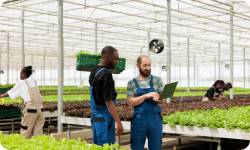
Food and Agriculture Organization (FAO)
Food Loss and Waste Database
Provides comprehensive data and reports on food loss and waste around the world, including causes, impacts, and potential solutions.
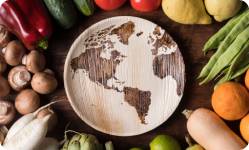
United States Environmental Protection Agency
Sustainable Management of Food
Offers information on food recovery strategies, including the Food Recovery Hierarchy, along with tools and resources to help reduce food waste.
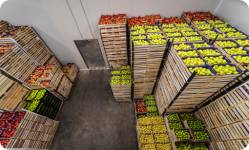
ReFED
ReFED – Insights Engine
An online hub for data and solutions for food waste, providing analytics and tools to understand and tackle food waste at each stage of the supply chain.
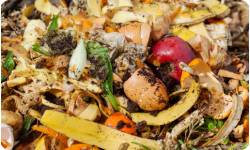
Natural Resources Defense Council (NRDC)
Food Waste
Shares research reports, policy recommendations, and practical guidance on reducing food waste at the consumer and policy level.
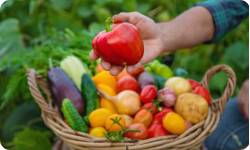
Harvard
Law School
Food Law and Policy Clinic
Publishes legal and policy research, toolkits, and guides that address food waste, food recovery, and the laws affecting these areas.
These sources offer a wealth of information that can aid in understanding the complexities of food waste and contribute to informed decision-making and action-taking for individuals, businesses, and policymakers.
- Food Waste in the U.S.: A Farm to Fork Journey - December 6, 2023
